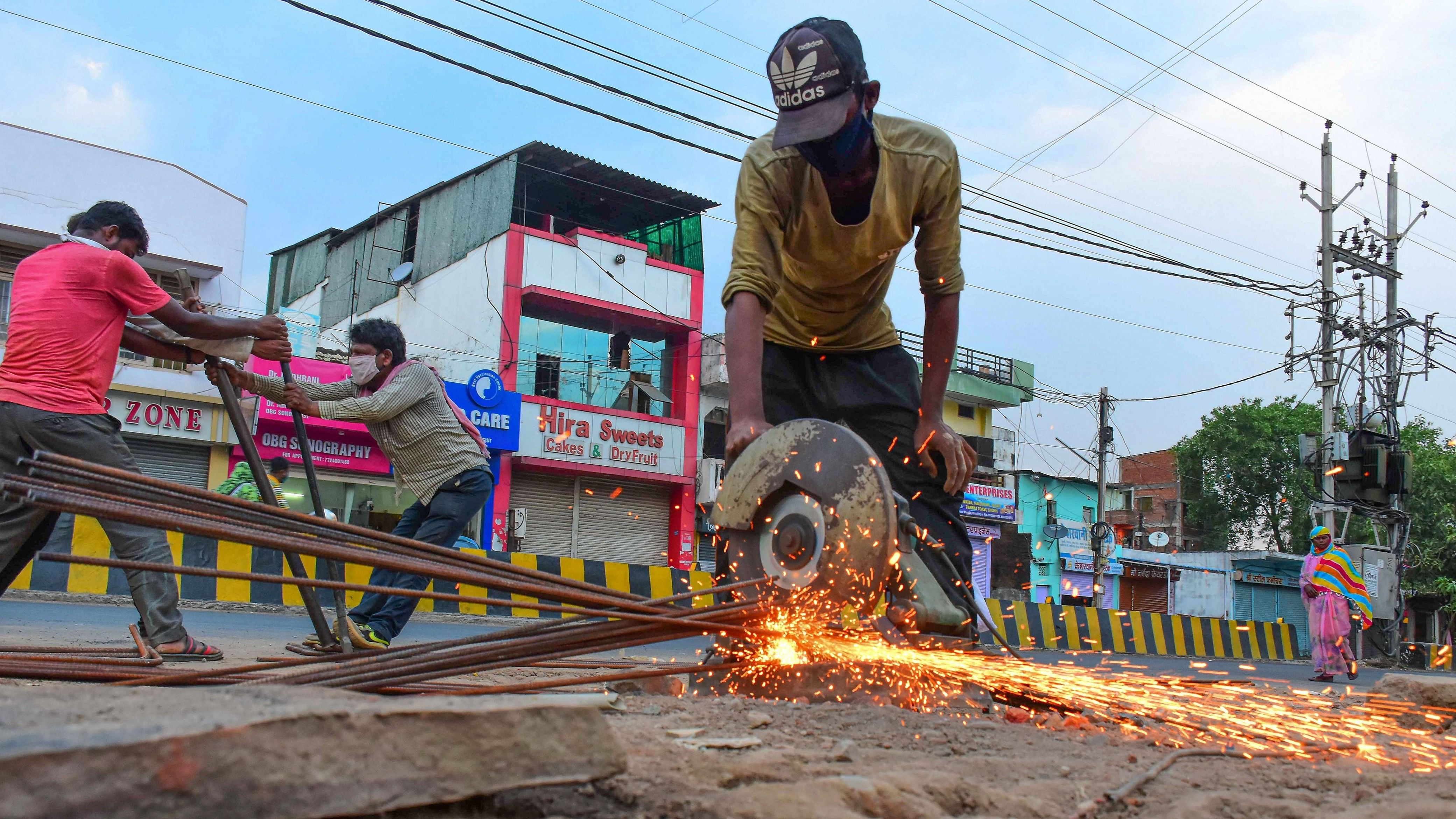
Jabalpur: Worker resumes construction work, during the ongoing nationwide Covid-19 lockdown, in Jabalpur.
Credit: PTI Photo
New Delhi: Formal unemployment in India during the year 2023 stood at 4.1%, the lowest in 12 years, while the country’s GDP expanded by 6.8%, the fastest among major economies, showed a report released by the United Nations on Thursday.
The report noted that India’s performance has been helped by its lack of external exposure, both to the developed world and to China. “Instead, the growth drivers for the country are primarily domestic,” the United Nations noted in its annual publication ‘Economic and Social Survey of Asia and the Pacific.’
India’s gross fixed capital formation increased by 9% in the final quarter of FY23 to reach a share of 34% of GDP, the highest since 2012-2013.
The report further added that India’s GDP growth during the year 2023 was supported by government spending on infrastructure and strong growth in manufacturing, mining and construction, which offset lower agricultural output.
It underlined that India and several South-East Asian countries are benefiting from growing numbers of young people, a phenomenon which is expected to continue up to 2050. This contrasts with some regional economies that are witnessing rapidly ageing populations, notably China, Japan and South Korea.
“While positive demographic forces provide an opportunity for some countries, taking advantage of these forces will require conscious policy choices by Governments,” the report said.
“Policies are needed to increase the productivity of this pool of young labour, if they are to match the regional demand from the shrinking labour force in advanced regional economies, which have much higher productivity,” it added.
Average economic growth in developing countries of the Asia-Pacific region picked up from 3.5% in 2022 to 4.8% in 2023, although the rebound was concentrated in a few large countries like India and China.
GDP growth in the Asia-Pacific region is projected to remain relatively steady, but below the pre-pandemic trend, at 4.4% in both 2024 and 2025, the report, published by the UN’s Economic and Social Commission for Asia and the Pacific (ESCAP), said.
“Uncertain inflation and interest rate trends, and escalation of geopolitical tensions and trade fragmentation are examples of economic headwinds faced by economies of the region,” it said.
The report highlighted the need for development of new perspectives and approaches to boost affordable and long-term financing for public investments in the Asia-Pacific region.
“Governments of developing countries across Asia and the Pacific are victims of an unjust, outdated and dysfunctional global financial architecture. They face fiscal constraints, rising borrowing rates with shorter loan maturity and heavy debt burdens,” United Nations Secretary-General António Guterres was quoted in a statement released by ESCAP.
Cut-off box - null